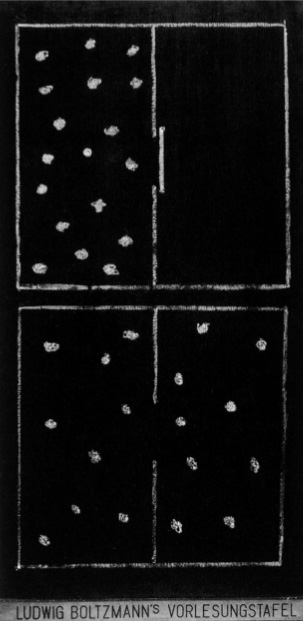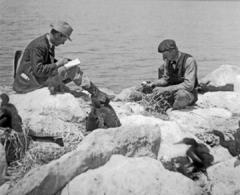
This Article From Issue
January-February 2011
Volume 99, Number 1
Page 82
DOI: 10.1511/2011.88.82
DANCE OF THE PHOTONS: From Einstein to Quantum Teleportation. Anton Zeilinger. vi + 305 pp. Farrar, Straus and Giroux, 2010. $26.
The marvels and paradoxes of quantum theory still exercise an incomparable hold on the contemporary imagination. Even after a century, the “spooky action at a distance” that so disturbed Albert Einstein has not lost its power to perplex and amaze. The enormous number of books on quantum physics bears witness to its enduring fascination; we look to each new account to see what insight or discovery it might convey.

In Dance of the Photons, Anton Zeilinger, professor of physics at the University of Vienna and director of the Institute for Quantum Optics and Quantum Information of the Austrian Academy of Arts and Sciences, offers an exciting new perspective. He is one of the leading investigators into the foundations and consequences of quantum theory. His long history of intense involvement in the concrete details of making quantum effects visible and measurable in fundamental experiments is reflected in the book, setting it apart from many other popularizations.
This account also brings a certain Viennese flavor back to the field, showing us experiments that have teleported photons across the Danube and paying respects at Erwin Schrödinger’s tomb in the Austrian Alps. Zeilinger writes with wit and clarity, combining humorous dialogue with an admirably serious and thorough treatment of some of the most challenging and fundamental concepts in modern quantum physics. Dance of the Photons is a wonderful resource for general readers who want to delve more deeply into contemporary quantum experiments and their ramifications.
Zeilinger frames his exposition around his group’s experiments on quantum teleportation—the faithful transmittal of a quantum state of a photon from one observer to another, who receives an identical copy of the initial state of a distant photon, although that state was not initially measured. (Such an initial measurement would have required that that state then be cloned, which has been proved to be impossible in principle.) Over the years, the schematic labels A and B for sender and receiver have evolved into the names Alice and Bob, and Zeilinger chooses those names for the protagonists of his drama: two students in Professor Quantinger’s Physics 101 class, who approach him saying that they want to learn more about quantum physics. He initiates Alice and Bob into the mysteries of the subject by giving them the opportunity to carry out a series of explorations and laboratory experiments (in which Alice acts as the sender, needless to say, and Bob as the receiver). They begin with the simplest and most fundamental observations of quanta and are gradually led to observe the “spooky” correlations that Einstein, Boris Podolsky and Nathan Rosen made famous.
Zeilinger tells his story with considerable verve and charm; Alice’s and Bob’s questions and perplexities allow him to air and discuss many important problems of quantum theory. His text is enlivened with useful illustrations—many of them informal drawings (some made on Ludwig Boltzmann’s original Viennese blackboard)—which nicely schematize the issues and help the reader consider them in visual form. In many ways, Zeilinger achieves a tour de force of exposition, considering the subtlety and counterintuitive quality of so many quantum concepts. I very much admired the detail and care he gives to each step in the argument. Unlike the authors of many popular books, he really wants the reader to think about and understand the argument or experiment at hand, rather than merely taking on faith pronouncements from on high. The book is carefully paced: A certain narrative edge is maintained, with well-judged pauses over difficult and thought-provoking passages. Zeilinger has a natural interest in the deep philosophical questions that emerge throughout, and he often addresses them helpfully; one is reminded of how much thought Schrödinger and the other founders of quantum theory devoted to these questions, which surely should continue to engage us.
The climax of this part of Zeilinger’s story is a brief, but logically satisfying and comprehensible, account of John Bell’s celebrated inequality and how it is derived. Additional information about Bell’s inequality is provided in an appendix to the book, nicely solving the problem of how to give enough detail for the reader who really wants, like Alice and Bob, to understand what is going on with as little hand-waving or mere assertion as possible. So successful is this appendix that I wish that Zeilinger had included more such additional explanatory material, whether in appendixes, text boxes or endnotes, for those who want to understand still more deeply. And I was really sorry that he included almost no bibliography or notes, not even references to his own papers; however popular and accessible a book may be, it owes its serious readers guidance in learning more and going further.
After his account of Bell’s work, Zeilinger goes on to more recent material, including quantum teleportation and progressively more intricate forms of quantum entanglement that lead to quantum money, quantum computers and other intriguing possibilities. He is careful to distinguish these amazing ideas from such notions as Star Trek–style teleportation of people, whose impossibility he makes clear. I was a little surprised that he abandons the student characters Alice and Bob about a hundred pages before the end of the book; I was quite caught up in their story and ready for more of their adventures. Perhaps Zeilinger felt he should speak in his own voice when giving an account of his own experiments.
That account includes a description of his implementation of Asher Peres’s proposal for delayed-choice teleportation experiments, in which crucial decisions by the receiver (who is called Bob, as convention dictates, even though the student characters are no longer on the scene) are made long after Alice (the sender) has written down her results in final form, yet Bob’s decisions completely change our view of Alice’s results. Addressing what seems to be the manifest contradiction in such proceedings, Zeilinger explains that, although Alice’s facts remain unchanged, our interpretation of them may be radically changed by Bob’s observational choices. Quantum “reality” looks more and more like a literary text: somehow fixed, yet subject to interpretation. Spookier and spookier! Einstein was wrong: Not only does God play dice, he turns out to be an inveterate gambler.
Peter Pesic, a physicist, historian and pianist, is Tutor and Musician-in-Residence at St. John’s College, Santa Fe. He is the author of several books, including Abel’s Proof: An Essay on the Sources and Meaning of Mathematical Unsolvability (2003) and Sky in a Bottle (2005), both published by The MIT Press.

American Scientist Comments and Discussion
To discuss our articles or comment on them, please share them and tag American Scientist on social media platforms. Here are links to our profiles on Twitter, Facebook, and LinkedIn.
If we re-share your post, we will moderate comments/discussion following our comments policy.